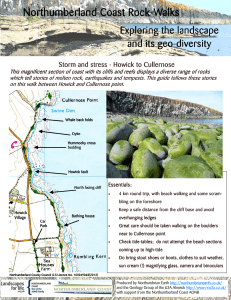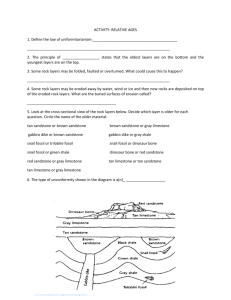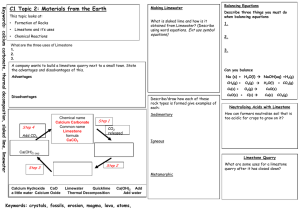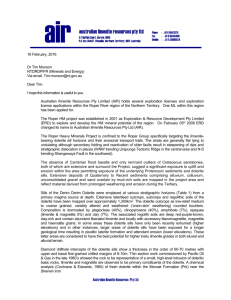Field trip to Low Force: Hot and Even Hotter – a new look at the
advertisement
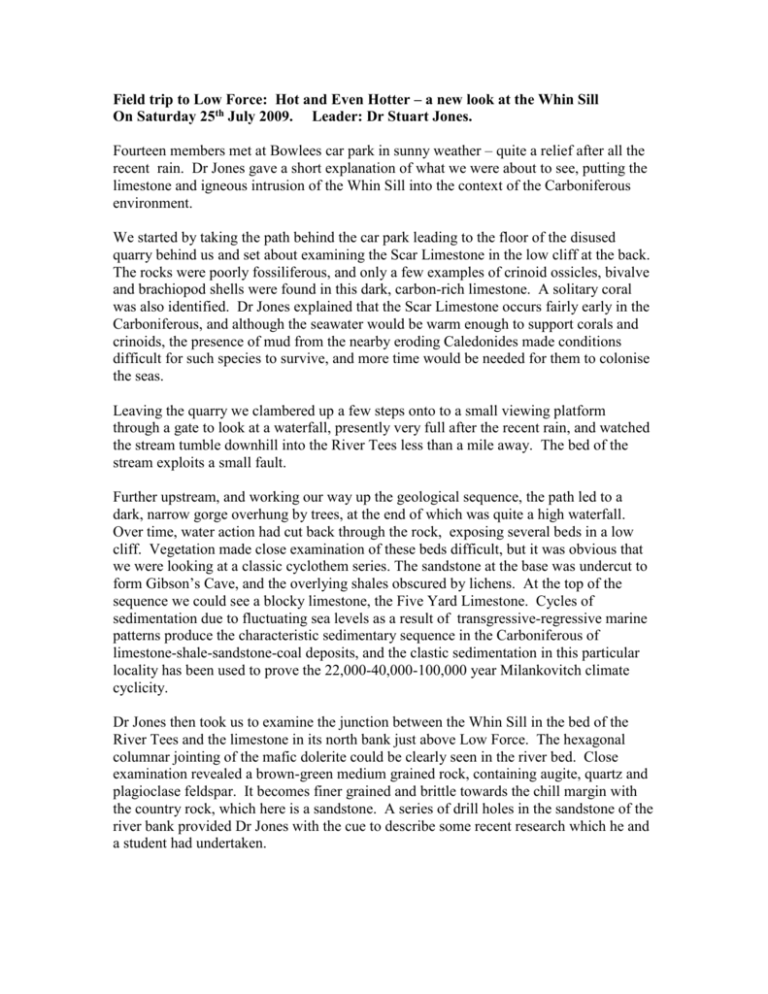
Field trip to Low Force: Hot and Even Hotter – a new look at the Whin Sill On Saturday 25th July 2009. Leader: Dr Stuart Jones. Fourteen members met at Bowlees car park in sunny weather – quite a relief after all the recent rain. Dr Jones gave a short explanation of what we were about to see, putting the limestone and igneous intrusion of the Whin Sill into the context of the Carboniferous environment. We started by taking the path behind the car park leading to the floor of the disused quarry behind us and set about examining the Scar Limestone in the low cliff at the back. The rocks were poorly fossiliferous, and only a few examples of crinoid ossicles, bivalve and brachiopod shells were found in this dark, carbon-rich limestone. A solitary coral was also identified. Dr Jones explained that the Scar Limestone occurs fairly early in the Carboniferous, and although the seawater would be warm enough to support corals and crinoids, the presence of mud from the nearby eroding Caledonides made conditions difficult for such species to survive, and more time would be needed for them to colonise the seas. Leaving the quarry we clambered up a few steps onto to a small viewing platform through a gate to look at a waterfall, presently very full after the recent rain, and watched the stream tumble downhill into the River Tees less than a mile away. The bed of the stream exploits a small fault. Further upstream, and working our way up the geological sequence, the path led to a dark, narrow gorge overhung by trees, at the end of which was quite a high waterfall. Over time, water action had cut back through the rock, exposing several beds in a low cliff. Vegetation made close examination of these beds difficult, but it was obvious that we were looking at a classic cyclothem series. The sandstone at the base was undercut to form Gibson’s Cave, and the overlying shales obscured by lichens. At the top of the sequence we could see a blocky limestone, the Five Yard Limestone. Cycles of sedimentation due to fluctuating sea levels as a result of transgressive-regressive marine patterns produce the characteristic sedimentary sequence in the Carboniferous of limestone-shale-sandstone-coal deposits, and the clastic sedimentation in this particular locality has been used to prove the 22,000-40,000-100,000 year Milankovitch climate cyclicity. Dr Jones then took us to examine the junction between the Whin Sill in the bed of the River Tees and the limestone in its north bank just above Low Force. The hexagonal columnar jointing of the mafic dolerite could be clearly seen in the river bed. Close examination revealed a brown-green medium grained rock, containing augite, quartz and plagioclase feldspar. It becomes finer grained and brittle towards the chill margin with the country rock, which here is a sandstone. A series of drill holes in the sandstone of the river bank provided Dr Jones with the cue to describe some recent research which he and a student had undertaken. After lunch, taken beside the picturesque falls of Low Force, we crossed the nineteenth century Wynch Bridge near Low Force to look at the huge raft of metamorphosed sandstone set in the upper part of the Whin Sill, after being detached by the basalt flow during its intrusion. The fine, glassy junction of the Whin Sill could clearly be seen beneath its contact with the large block of sandstone. As it was a beautiful sunny afternoon, a small group decided to continue the walk upriver to High Force. On the way we discussed the provenance of various Quaternary features, including a spectacular set of glacial grooves in a block of limestone by the side of the footpath. Finally we were rewarded by a glorious view of High Force in full spate after the recent rain gushing over the Whin Sill ledge. Mavis Gill Exit this document to return to Previous Field Trips.

